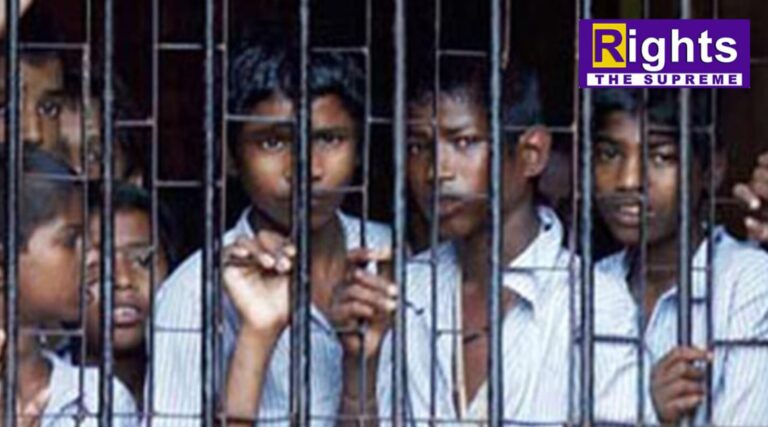India is currently at a pivotal point regarding its approach to minors involved in drug offenses. The Juvenile Justice (Care and Protection of Children) Act of 2015 defines a juvenile as an individual under the age of eighteen, with a primary focus on reform and rehabilitation over punitive measures. Nevertheless, recent data indicate an increase in minors engaging in drug abuse and trafficking. This trend prompts a critical evaluation of whether current juvenile laws are sufficient to address evolving criminal landscapes.
The Escalating Challenge of Juvenile Involvement in Drug-Related Offenses
Over the past decade, there has been a significant increase in arrests of minors for drug consumption and distribution across both urban and rural regions of India. Organized criminal networks are increasingly leveraging children as couriers and sellers, exploiting legal provisions designed to shield juveniles from adult penalties. Field research and law enforcement data suggest that certain minors, particularly within vulnerable communities, are being pressured or coerced into these activities by adults who exploit the legal protections afforded to children.
• In Mumbai and Delhi, child protection organizations have documented numerous cases where juveniles were implicated as primary dealers, while adult orchestrators remained insulated from prosecution.
• A considerable number of these juveniles are repeat offenders, which highlights the limitations of current rehabilitative programs and the compelling circumstances that contribute to their re-engagement in criminal activities.
Legal Proposals: Adjusting the Age Threshold
In response to increasing public concern, several state governments and legal professionals are advocating for legislative amendments to classify individuals above a specified age as adults for certain serious drug offenses. These proposals frequently recommend reducing the age threshold from 18 to 16, or in some instances, to 15, for crimes involving drug trafficking or significant distribution.
• Advocates contend that drug-related offenses, distinct from impulsive or isolated incidents, necessitate premeditation, intent, and a degree of criminal sophistication that should not be mitigated solely on the basis of age.
• Reducing the age threshold could convey a clear message to organized criminal networks: the “juvenile shield” will no longer serve as a loophole for drug-related criminal activities.
Dilemmas of Maturity and Intent
Central to this discussion is the question: Does chronological age adequately reflect criminal responsibility, or should intent and maturity be more thoroughly examined?
• The concept of “juvenile adults”—individuals aged 16 to 18 who have committed serious offenses—challenges the notion that all minors are incapable of genuine criminal intent.
• Certain psychologists and child welfare advocates acknowledge the existence of criminal intent in older minors, particularly in instances of repeated or organized offenses, yet they advise against applying this generalization to all juveniles.
Arguments Against Lowering the Age
Despite calls for more stringent measures, most child rights advocates and legal experts advise prudence.
• Adolescents are undergoing critical psychological and emotional development, and severe penalties risk disrupting their growth, education, and future opportunities.
• Denying juveniles access to rehabilitation and treating them as adults may exacerbate cycles of poverty, abuse, and criminalization, permanently altering their life trajectory.
• India’s commitments under the UN Convention on the Rights of the Child (CRC) mandate that juvenile offenders receive care, counseling, and educational opportunities rather than punitive sentences, particularly for non-violent or first-time offenses.
International Perspectives and Child Rights
Nations such as the United States, United Kingdom, and Australia have encountered comparable discussions. Certain U.S. states permit the transfer of juveniles to adult courts for severe offenses, while others uphold more stringent age-based protections under child law. Nevertheless, the majority of nations adhering to child rights conventions prioritize rehabilitation, comprehension, and reintegration over incarceration.
• The CRC, to which India is a signatory, stipulates that every child accused of an offense must be treated with dignity, provided with legal and psychological support, and detained only as a measure of last resort and for the shortest possible duration.
Reform Strategies Beyond Age Reduction
Instead of increasing the punitive nature of legislation, numerous experts advocate for a renewed emphasis on preventive and restorative justice:
• Implementing drug awareness initiatives within educational institutions at all levels and in communities identified as high-risk for juvenile recruitment by illicit drug networks.
• Establishing specialized counseling services for minors identified with substance abuse issues, staffed by mental health professionals, social workers, and peer mentors.
• Allocating resources to community centers and youth support programs to address underlying issues such as poverty, educational disparities, and exposure to criminal organizations.
• Enhancing oversight mechanisms (e.g., juvenile monitoring units, collaborative efforts between law enforcement and parents) to intervene proactively before minors become habitual offenders.
The Equilibrium Between Protection and Accountability
India faces the challenge of achieving a delicate balance: ensuring the protection of its children from exploitation and criminalization, while simultaneously safeguarding society from recurrent or organized juvenile offenses. The solution necessitates moving beyond superficial headlines and hasty legislative changes, towards evidence-based policy formulation that upholds India’s dedication to child welfare.

